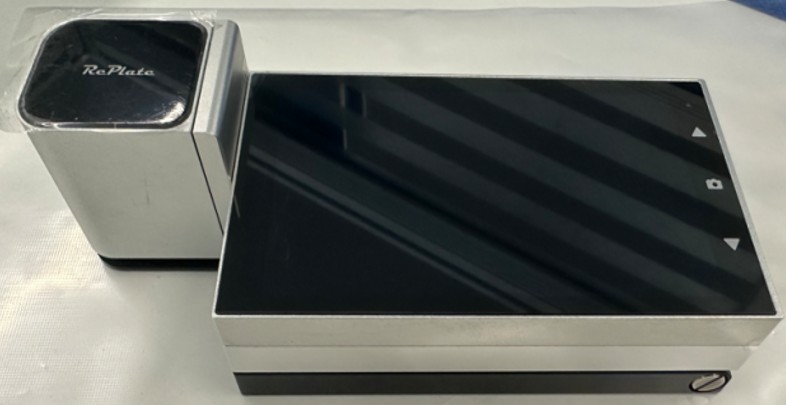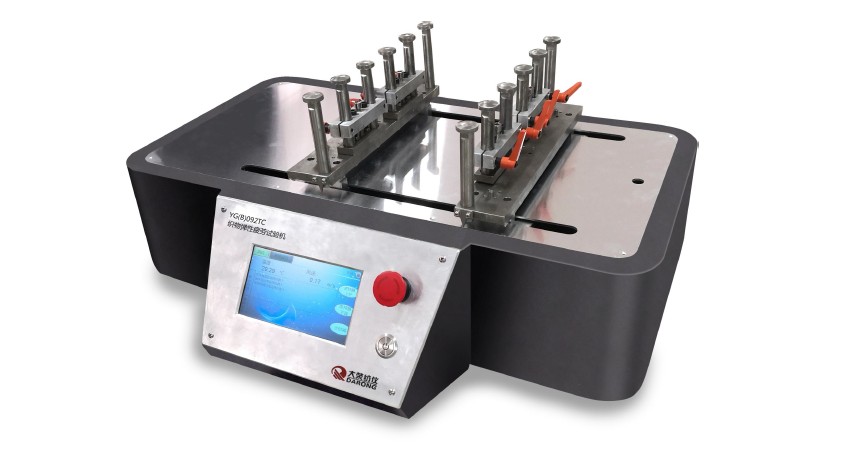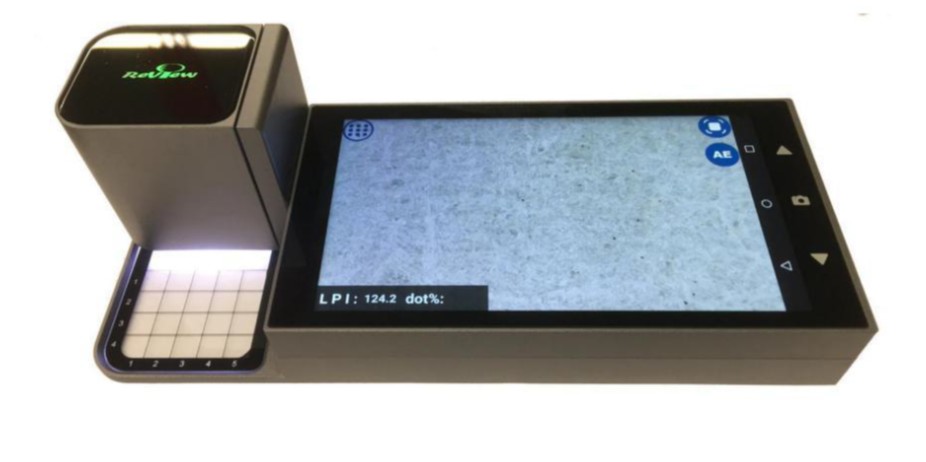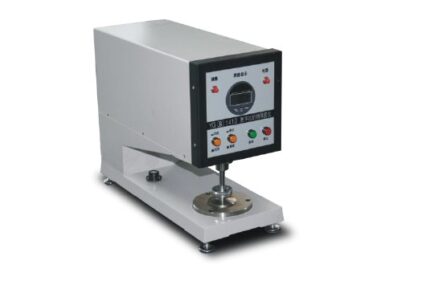Digital Paper Dot Meter Densitometer
$0.00
Digital Paper Dot Meter Densitometer
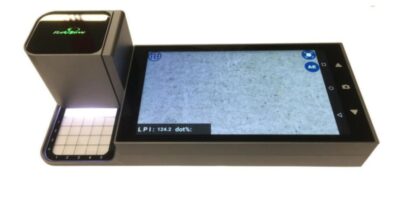
Digital Paper Dot Meter Densitometer
Dot mainly expresses hue and gradation in printing industry. They are foundation of copy and color
reproduction of printed products. Dot, tiniest unit to adsorb ink in offset print, reflects hue, gradation and tone of source products in printed. Changes of dots results in problems of printed products including sharpness, gradation, hue, contrast, tone of printing ink, ink density and black overprint.
The advanced dot measurement technology is used for detecting and controlling plate and quality of dot. It supports all kinds of screening technologies used at present including amplitude screening, frequency modulation screening, specialized screening and hybrid screening technology.
A Digital Paper Dot Meter Densitometer is a precision instrument designed to measure the optical density and dot characteristics of printed materials, particularly in the printing and packaging industries. It plays a crucial role in quality control by ensuring color consistency, accurate dot reproduction, and overall print fidelity.
Purpose and Applications of Digital Paper Dot Meter Densitometer
This device is primarily used to:
– Measure Optical Density: Assess the darkness or lightness of printed areas to ensure consistent ink application.
– Evaluate Dot Gain: Determine the increase in dot size during printing, which affects image sharpness and color accuracy.
– Analyze Dot Area and Enlargement: Quantify the percentage of area covered by dots and any unintended expansion.
– Assess Overprint and Contrast: Examine how different ink layers interact and the contrast between printed elements.
– Monitor Tone Error and Gray Balance: Ensure accurate reproduction of tones and neutral grays.
These measurements are vital for maintaining high-quality standards in offset printing, flexography, gravure, and other printing processes.
⚙️ Key Features
Modern digital densitometers, such as the YD5010 PLUS Spectro-Densitometer, offer advanced functionalities:
– Measurement Geometry: 45°/0° configuration for accurate color and density readings.
– Light Sources: Combined LED and UV light for versatile measurement conditions.
– Spectral Range: 400–700 nm with a 10 nm interval, covering the visible spectrum.
– Detector: 256-element double array CMOS sensor for high-resolution data capture.
– Density Standards: Compliant with ISO Status A, E, I, T for standardized measurements.
– Color Spaces: Supports CIE LAB, XYZ, Yxy, LCh for comprehensive color analysis.
– Observer Angles: Selectable 2° and 10° angles for different viewing conditions.
– Measurement Modes: Single and average measurements (2–99 readings) for flexibility.
– Data Storage: Capacity to store over 10,000 measurement records.
– Display: 3.5-inch TFT color LCD with capacitive touch for intuitive operation.
– Power Supply: Rechargeable Li-ion battery supporting up to 5,000 measurements per charge.
These features enable precise monitoring and control of printing processes, ensuring high-quality output.
Measurement Capabilities of Digital Paper Dot Meter Densitometer
Digital densitometers provide a range of measurement functions:
– Density Value and Difference: Quantify the optical density and compare variations across samples.
– Dot Area and Enlargement: Calculate the percentage of area covered by ink dots and any growth during printing.
– Overprint Analysis: Evaluate how different ink layers interact when overprinted.
– Printing Characteristics: Assess parameters like contrast, tone error, and gray balance.
– Color Difference (ΔE): Measure the deviation between intended and actual colors using formulas like ΔE*ab, ΔE*94, and ΔE*00.These measurements are essential for maintaining color accuracy and consistency in printed materials.
Usage and Operation of Digital Paper Dot Meter Densitometer
Using a digital paper dot meter densitometer typically involves:
- Calibration: Performing white and black calibration using provided standards to ensure measurement accuracy.
- Sample Placement: Positioning the printed sample under the measurement aperture.
- Measurement: Initiating the measurement process via the touch screen or connected software.
- Data Analysis: Reviewing the displayed results and, if necessary, transferring data to a computer for further analysis.Regular calibration and maintenance are recommended to maintain the device’s accuracy and longevity.
Industry Applications of Digital Paper Dot Meter Densitometer
Digital paper dot meter densitometers are widely used in:
– Printing and Packaging: Ensuring consistent color reproduction and print quality.
– Ink Manufacturing: Testing ink properties and performance.
– Paper Production: Assessing paper’s suitability for various printing processes.
– Quality Control Laboratories: Conducting standardized tests to comply with industry regulations.
By providing accurate and reliable measurements, these devices help maintain high standards across the printing and packaging industries.
Benefits of Digital Paper Dot Meter Densitometer:
- Accurate Dot Analysis – Precisely measures dot gain, dot area, and enlargement for high-quality printing.
- Consistent Print Quality – Helps maintain uniform color density and contrast across print runs.
- Time-Saving – Quick digital readings eliminate the need for manual inspection and reduce errors.
- Multi-Parameter Testing – Measures density, color difference (ΔE), tone error, and gray balance in one device.
- Supports Industry Standards – Complies with ISO and other standards for print quality control.
- User-Friendly Interface – Touchscreen and onboard storage make it easy to operate and manage test data.
- Portable and Rechargeable – Battery-powered with thousands of readings per charge—ideal for field and lab use.
- Enhances Process Control – Enables precise adjustments during printing to reduce waste and reprints.
Features of Digital Paper Dot Meter Densitometer:
- High-Resolution CMOS Sensor – Ensures precise optical density and color measurements.
- Measurement Geometry: 45°/0° – Ideal for accurate reflection density readings on printed materials.
- Multiple Light Sources – Includes visible and UV LEDs for versatile testing conditions.
- Touchscreen Display – 3.5-inch color LCD with intuitive controls for easy operation.
- Multi-Function Measurement – Measures dot area, dot gain, density difference, tone error, and gray balance.
- Large Data Storage – Stores over 10,000 measurements for tracking and reporting.
- Rechargeable Battery – Long-lasting lithium battery supports up to 5,000 readings per charge.
- USB and Bluetooth Connectivity – Allows data transfer and remote operation via PC or mobile apps.
- Standard Compliance – Supports ISO Status A, E, I, T and CIE color spaces like LAB, LCh, XYZ.
- Multiple Observer Angles – Select between 2° and 10° for different visual perception simulations.
How to Use Digital Paper Dot Meter Densitometer:
- Power On – Turn on the device using the power button.
- Calibrate – Perform black and white calibration using the provided standard tiles to ensure accuracy.
- Select Measurement Mode – Choose desired mode: density, dot area, dot gain, ΔE, contrast, or gray balance.
- Place Sample – Position the printed paper sample under the measurement aperture.
- Take Measurement – Press the measure button or tap the screen. The device will scan and display results instantly.
- Analyze Results – View data on the touchscreen. You can switch between values like density, dot area, and color difference.
- Save or Export Data – Store results in internal memory or transfer via USB/Bluetooth if needed.
- Power Off and Store – Turn off after use. Keep in a dust-free area to protect sensors.
Performance characteristics:
1.Android OS with HD 720 capacitive touching screen, storage of shooting and measured data and
wireless network transmission.
2.Real time HD shooting of micro image dots for reveal reduction quality of dots in detail.
3.Measurement APP is equipped with advanced image processing technology that ensures precise
measure data, and eight measuring instruments for satisfying measurement of not only daily dot ratio and screening lines, but also measuring of length, angle and area of dots and lines.
4.Electronic precise focusing with step motor to coordinate lens for a sharply clear focusing.
5.Convenient data storage through built-in one-button shoot
Magnification 5-200, Screen 720 P HD LCD touchable screen
Operation system Android 5.0, Digital zoom 2, Image format BMP, Net weight 300g, Set weight 500g
Image size 1280*720, Lighting White light LTD*8pcs, Measuring time 1 s
Repeatability ±0.02 D(density),± 1%(dot area), Interface Micro USB 2.0, HDMI
Storage 16GB, ROM 2GB
Battery capability 3200mAh
Battery type Rechargeable lithium battery
Network WIFI
Dimension 185*70*55 mm
Sensor CMSO 1.3 megapixel

Digital Paper Dot Meter Densitometer
Related products
Color Matching Cabinet-Light Box
Color Matching Cabinet-Light Box

Color Matching Cabinet-Light Box
Perspiration Tester
Perspiration Tester

Perspiration Tester
- Fabric samples are treated with synthetic perspiration solution (acidic or alkaline).
- They are sandwiched with adjacent fabric and placed between glass or acrylic plates.
- The assembly is loaded into the tester and pressed under specific pressure.
- it’s then incubated at 37°C (body temperature) for a fixed time (typically 4 or 16 hours).
- Afterward, color change and staining are evaluated using a gray scale.
- Accurate Sweat Simulation - Mimics real-life effects of acidic and alkaline perspiration on fabrics.
- Improves Product Quality - Ensures textiles retain color and don’t bleed or stain when worn.
- Supports Standard Compliance - Follows ISO and AATCC test standards for global market approval.
- Protects Brand Reputation- Reduces customer complaints due to dye transfer or fading.
- Simple and Repeatable- Provides consistent pressure and conditions for reliable results.
- Multi-Sample Testing- Tests multiple specimens at once, saving time in labs.
- Durable and Low Maintenance- Robust frame with minimal moving parts makes it long-lasting and easy to care for.
- Stainless Steel Frame - Corrosion-resistant body for durability and long-term use.
- Multi-Sample Capacity - Can hold up to 20 or more specimens for batch testing.
- Standardized Loading Weight- Applies uniform pressure (usually 12.5 kPa) across all samples.
- Removable Plates - Glass or acrylic plates ensure even contact and easy cleaning.
- Compact Design- Space-saving, bench-top model ideal for lab environments.
- Complies with Test Standards - Meets ISO 105 E04, AATCC 15, and related perspiration fastness standards.
- Ease of Operation - Simple loading, unloading, and incubation process.
- High-Temperature Resistance - Can be used inside incubators at 37°C or ovens as required.
- Prepare the Test Solution - Mix artificial acidic or alkaline perspiration as per standard (ISO or AATCC).
- Cut the Fabric Samples - Cut both the test fabric and adjacent white fabric (usually cotton) to standard size.
- Soak the Samples - Immerse the fabric sandwich (test + adjacent) in the test solution for 30 minutes.
- Remove Excess Liquid - Gently squeeze or blot to remove extra moisture—do not dry.
- Load in the Tester- Place each sandwich between glass or acrylic separator plates in the tester.
- Apply Pressure - Tighten the top plate or place the standard weight on top to apply uniform pressure.
- Incubate - Keep the loaded tester in an oven or incubator at 37°C for 4–16 hours (depending on the method).
- Accurate Sweat Simulation - Mimics real-life effects of acidic and alkaline perspiration on fabrics.
- Improves Product Quality - Ensures textiles retain color and don’t bleed or stain when worn.
- Supports Standard Compliance - Follows ISO and AATCC test standards for global market approval.
- Protects Brand Reputation- Reduces customer complaints due to dye transfer or fading.
- Simple and Repeatable- Provides consistent pressure and conditions for reliable results.
- Multi-Sample Testing- Tests multiple specimens at once, saving time in labs.
- Durable and Low Maintenance- Robust frame with minimal moving parts makes it long-lasting and easy to care for.
- Dry and Evaluate - Remove, air dry the samples, then assess color change and staining using a gray scale.
- Fabric samples are treated with synthetic perspiration solution (acidic or alkaline).
- They are sandwiched with adjacent fabric and placed between glass or acrylic plates.
- The assembly is loaded into the tester and pressed under specific pressure.
- it’s then incubated at 37°C (body temperature) for a fixed time (typically 4 or 16 hours).
- Afterward, color change and staining are evaluated using a gray scale.

Perspiration Tester
Digital Temperature Humidity Meter
Digital Temperature Humidity Meter

Digital Temperature Humidity Meter
VeriVide Colour Assessment Cabinets
VeriVide Colour Assessment Cabinets
 VeriVide offers high-quality Colour Assessment Cabinets (CACs) such as the CAC 60-4, CAC 60-5, and CAC 120-4&5. These cabinets, originating from the UK, are reliable tools for visual evaluation in quality assurance, meeting national, international, and retailer standards. They effectively mitigate issues related to color assessment.VeriVide Colour Assessment Cabinets
High-quality visual evaluation tool for quality assurance. Adhering to national, international and retailer standards.Colour Assessment Cabinet's (CACs) reduce problems associated with assessing products or samples in different environments,be though geological or seasonal, offering a cost-effective method to ensure visual accuracy and product quality.
Color Light Box Enhance color precision with VeriVide's cutting-edge Colour Assessment
Cabinets. These cabinets are meticulously designed to ensure accurate color evaluation in various industries. Invest in VeriVide Colour Assessment Cabinets to elevate your color assessment process.
Enhance Color Precision with VeriVide's Cutting-Edge Assessment Cabinets, which meet or surpass ISO 3664 and BS 950 Part 1 international standards. The cabinets are adaptable to user requirements, with lamp options to choose different light sources. Available in 60, 120, and 150cm widths, VeriVide Colour Assessment Cabinets provide a flexible solution for accurate color assessment.
Incorporate user-friendly features like servicing indicator, auto sequence, warm-up, power save and data storage.4 or 5 light source options Versions available for colour fastness testing and particulate testing both adhering to global standardsEnsure that you are using the best equipment available as they provide the best fluorescent D65 daylight simulator, with the highest Colour
Rendering Index (CRI), available. VeriVide Colour Assessment Cabinets products are known as light boxes, viewing booths, colour cabinets and others, depending on which industry or country they are serving in. They are used within a wide array of industry sectors throughout the world including textile and apparel, graphics, automotive, ceramics, cosmetics, pharmacology (CAC Particulate),
food, footwear, packaging and printing.Download the Datasheet below for more information or click 'VeriVide CAC Datasheet Here' to get in touch with colour experts.
VeriVide CAC Datasheet Here Features of VeriVide Colour Assessment Cabinets
• CAC 60, CAC 120 and CAC 150 accommodate 60, 120 and 150cm tubes respectively
VeriVide offers high-quality Colour Assessment Cabinets (CACs) such as the CAC 60-4, CAC 60-5, and CAC 120-4&5. These cabinets, originating from the UK, are reliable tools for visual evaluation in quality assurance, meeting national, international, and retailer standards. They effectively mitigate issues related to color assessment.VeriVide Colour Assessment Cabinets
High-quality visual evaluation tool for quality assurance. Adhering to national, international and retailer standards.Colour Assessment Cabinet's (CACs) reduce problems associated with assessing products or samples in different environments,be though geological or seasonal, offering a cost-effective method to ensure visual accuracy and product quality.
Color Light Box Enhance color precision with VeriVide's cutting-edge Colour Assessment
Cabinets. These cabinets are meticulously designed to ensure accurate color evaluation in various industries. Invest in VeriVide Colour Assessment Cabinets to elevate your color assessment process.
Enhance Color Precision with VeriVide's Cutting-Edge Assessment Cabinets, which meet or surpass ISO 3664 and BS 950 Part 1 international standards. The cabinets are adaptable to user requirements, with lamp options to choose different light sources. Available in 60, 120, and 150cm widths, VeriVide Colour Assessment Cabinets provide a flexible solution for accurate color assessment.
Incorporate user-friendly features like servicing indicator, auto sequence, warm-up, power save and data storage.4 or 5 light source options Versions available for colour fastness testing and particulate testing both adhering to global standardsEnsure that you are using the best equipment available as they provide the best fluorescent D65 daylight simulator, with the highest Colour
Rendering Index (CRI), available. VeriVide Colour Assessment Cabinets products are known as light boxes, viewing booths, colour cabinets and others, depending on which industry or country they are serving in. They are used within a wide array of industry sectors throughout the world including textile and apparel, graphics, automotive, ceramics, cosmetics, pharmacology (CAC Particulate),
food, footwear, packaging and printing.Download the Datasheet below for more information or click 'VeriVide CAC Datasheet Here' to get in touch with colour experts.
VeriVide CAC Datasheet Here Features of VeriVide Colour Assessment Cabinets
• CAC 60, CAC 120 and CAC 150 accommodate 60, 120 and 150cm tubes respectively
- Either 4 or 5 light sources available for each model including D65, D50, 840P15, F and UV - see Lamp Options.• Internal finishes in Munsell N5, Munsell N7 or Grey 5574 • Diffuser and/or dimmer options available Dimensions of VeriVide Colour Assessment Cabinets CAC 60-4 Dimensions (mm) Width Height Depth Overall 710 545 420
Hydraulic GSM Cutter
Hydraulic GSM Cutter

Hydraulic GSM Cutter
- High Cutting Precision - Ensures consistent and accurate fabric sample size for reliable GSM results.
- Effortless Operation- Hydraulic action reduces manual effort and operator fatigue.
- Ideal for Thick or Multi-Layer Fabrics - Cuts through dense or multiple fabric layers cleanly.
- Time-Saving - Speeds up the sample preparation process, especially for high-volume testing.
- Improves Test Accuracy - Uniform samples help eliminate errors in GSM calculation.
- Durable and Long-Lasting - Robust construction ensures stability and extended service life.
- Safety Enhancement - Reduces risk of injury compared to manual rotary cutters.
- Consistent Pressure Application - Hydraulic mechanism maintains steady force for each cut.
- Hydraulic Press Mechanism - Applies consistent and strong pressure for clean, even cuts.
- Standard Cutting Die (100 cm²) - Produces fabric samples suitable for GSM testing with standard area.
- Heavy-Duty Construction - Built with robust metal frame for long-term lab or industrial use.
- Sharp Stainless Steel Blades - Durable and replaceable blades ensure smooth, precise cuts.
- Cutting Pad Included - Comes with a rubber or nylon base to protect blades and ensure clean edges.
- Simple Lever or Button Operation - Easy to use with minimal training required.
- Non-slip Base - Provides stability during operation for safe, accurate cutting.
- Supports Various Fabric Types
- Place the Cutting Pad - Lay the rubber or nylon cutting pad on a flat surface.
- Position the Fabric - Place the fabric sample flat and smooth on the cutting pad.
- Align the Cutter - Position the GSM cutter die over the desired area of the fabric.
- Activate Hydraulic Press - Pull the lever or press the button to apply hydraulic pressure and cut the sample.
- Remove the Sample - Lift the cutter and carefully take out the circular fabric piece (usually 100 cm²).
- Weigh the Sample - Place the cut sample on a precision balance or GSM scale to determine weight.
- Calculate GSM - Multiply the sample weight (in grams) by 100 to get GSM.

Hydraulic GSM Cutter
Digital Ink Rubbing Tester
Digital Ink Rubbing Tester
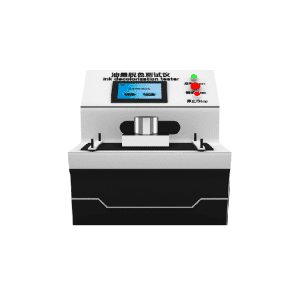
Digital Ink Rubbing Tester

Digital Ink Rubbing Tester
Pantone book
Pantone Book

Pantone Book
- Formula Guide (Solid Coated & Uncoated) – For spot color printing.
- Color Bridge – Shows Pantone spot colors alongside CMYK equivalents.
- Pantone Fashion, Home + Interiors (FHI) – For textiles, soft goods, and home decor.
- Pantone CMYK and Pastels & Neons Guides – For process printing and special effect colors.
- Formula Guide (Solid Coated & Uncoated)
- Color Bridge Guide (Coated & Uncoated)
- CMYK Guide (Coated & Uncoated)
- Pastels & Neons Guide
- Metallics Guide
- FHI Color Guide (TPG – Paper)
- FHI Cotton Passport & Cotton Planner (TCX – Textile)
- FHI Polyester Swatch Book
- Pantone SkinTone Guide
- Pantone Plastic Standard Chips

Pantone Book
IR Dyeing Machine Dunlin
IR Dyeing Machine Dunlin
IR Dyeing machine Dunlin is Safe, high efficiency, environment friendly, energy saving, optimum for new dyeing small sample machines0 - 3.5 ℃ / min Cooling rate 0.2 - 5 ℃ / min Cooling method Air-cooled Rotation speed 0 - 60 rpm Liquor ratio 1:5 -1:100 Power supply 1∮AC 220V 50/60HZ Dimensions( L x W x H) 670×670×780mm 860×680×780mm Weight 100kg 120kg Standard Accessories Cups 1set
Put the test sample. Cups stand 1set Place where to put cups. Protective glove 1set To avoid to be hurt by HT cups. Model: IF-24SCapacity: 24 pots Brad: DUNLIN Origin: China
Color dyeing tests for various dyestuffs of IR Dyeing machine Dunlin- Step dyeing tests. C. Dispersing, levelling and impregnating test. D. High or low liquor ratio exhausting tests. E. Fabric steak and staining tests. F. Concentration tests and others. Protection and Safety gates to protect. Temperature control accuracy +/- 0.2degree

IR Dyeing machine



 Products
Products
 Martindale abrasion tester Updated
Martindale abrasion tester Updated
